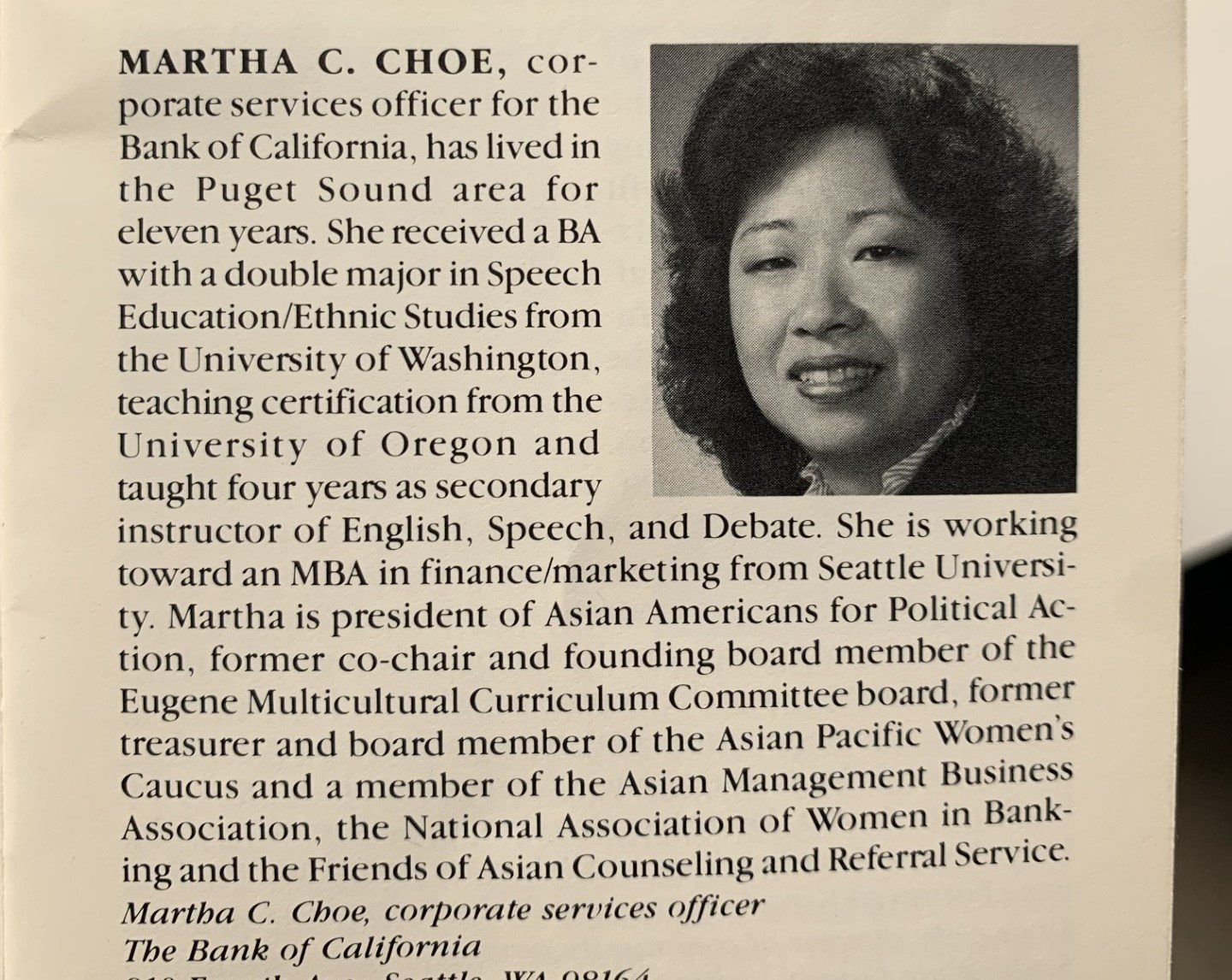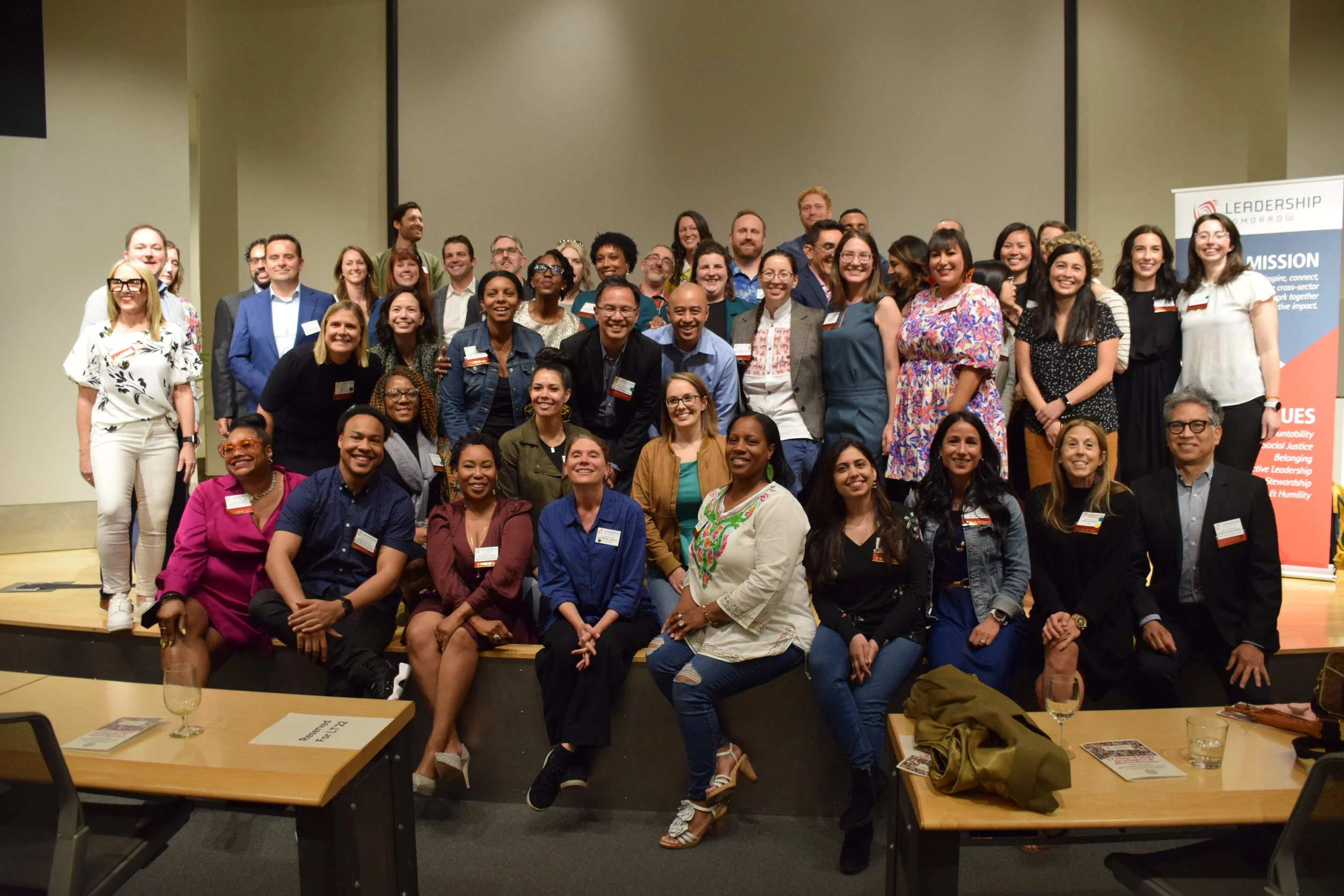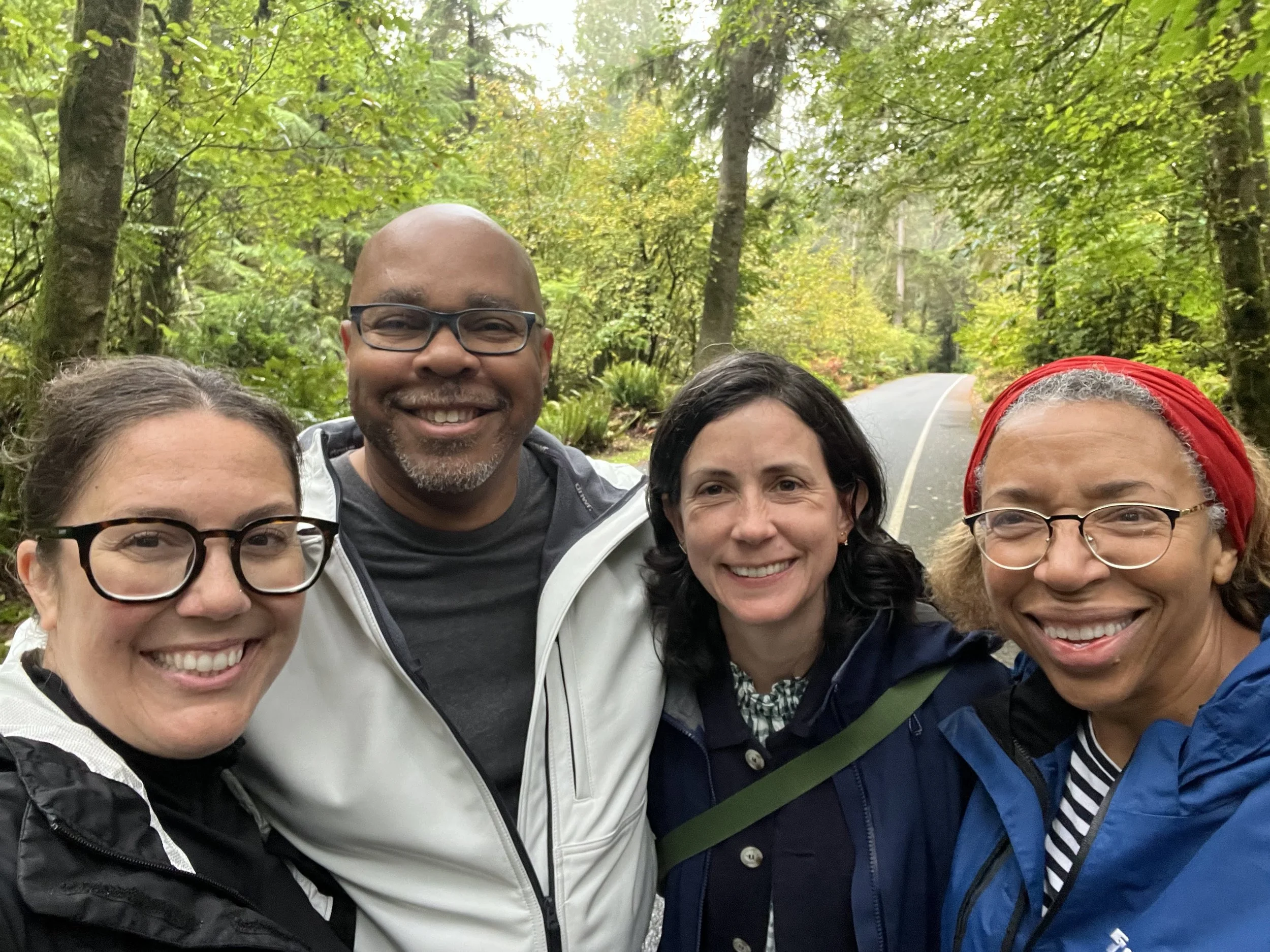Martha Choe, LT'84
Four Decades of Success: Martha Choe’s Reflections
Engaged leadership is the foundation of thriving communities.
For 40 years, Leadership Tomorrow has worked at the forefront of civic engagement to cultivate a network of inclusive, courageous, and curious leaders across Puget Sound. As we celebrate this special milestone, we are proud to highlight stories from LT alumni who continue to shape our region into a vibrant, vital community where all can thrive. Explore moments from their leadership journeys, past and present, as we consider collectively what challenges and opportunities lay ahead in the next 40 years—and beyond.
How did LT influence your leadership journey?
Prior to learning about Leadership Tomorrow, I had not thought a great deal about leadership. I was surprised that I was accepted into the program because I’d never seen myself as a leader. LT provided me with valuable exposure to leaders across many different sectors early in my work life, and it challenged me to think about the kind leader I wanted to become. We had the great benefit of having many leaders in our class.
Martha’s bio and headshot in the LT’84 directory
As the class of ’84, we were the beta test. An early mishap in the program (aka the Sun Mountain Retreat) had the unintended effect of creating a strong bond among everyone. It became a shared experience that served as a kind of glue for us.
How did your lab project impact your government work at the city and state level?
In 1984, downtown Seattle was pretty sleepy. Our lab team envisioned a livelier central core and asked what it would take to make Seattle a 24-hour city.
We interviewed national experts in retail and housing and surfaced several critical factors for a vibrant downtown, from a mix of housing to a strong retail core. While high-end and subsidized housing were essential, middle-income housing played a pivotal role. These residents would stay in the city year-round and support local stores and restaurants. We learned from national expert Dick Outcault that a minimum of three flagship retail stores was vital for anchoring downtown. They would generate foot traffic and circulation, which are critical to the success of smaller stores and for ensuring a sense of public safety.
Our project resulted in a white paper and a vision rather than a specific blueprint for a 24-hour Seattle. Little did I know that this research would prove invaluable eight years later when I was elected to the Seattle City Council! Downtown Seattle was dying, a result of many factors, including a recession and the collapse of Frederick & Nelson due to a leveraged buyout. Street crime surged, causing small merchants to lock their doors and shut out prospective customers.
Mayor Norm Rice spearheaded a public-private strategy to revitalize the city center. It encompassed many different elements, including leveraging federal funds to develop a parking garage that would catalyze a new shopping center, Pacific Place, and provide a new stream of revenue for the city. A healthy downtown meant a healthy Seattle because the downtown core generates a disproportionally high proportion of general fund dollars; these are flexible funds that can be directed to address needs throughout the city. If we let downtown Seattle die and go the way of many other cities, there was no guarantee it would ever come back.
Mayor Rice named his deputy mayor, Bob Watt, as the lead for this effort. Yes, the same Bob Watt in my LT lab group from the class of 1984! We were amazed that our LT project gave us a shared understanding of the key ingredients of a vibrant downtown, and that we both had key roles in putting what we learned into action. I sponsored and championed the legislation enabling this public-private partnership to move forward. Shortly after we passed the legislation, an initiative to overturn this development qualified for the ballot. Fortunately, it lost.
I never would’ve believed the LT project would have such a significant impact on my role on the city council.
Seattle City Council in 1992
Which LT connections have helped you to make an impact in our community?
I made many meaningful relationships in LT that first year: friendships that endure to this day and that have touched my life in many different ways. I never would’ve met most, if not all, of my LT class, had it not been for the program. However, one connection was truly remarkable.
Bob Watt was my lab group colleague in LT. A respected leader in the nonprofit sector and the executive director of family services for United Way, Bob was tapped to be Norm Rice’s deputy mayor. Eight years later when I joined the city council, Bob was the lead for ensuring downtown Seattle would survive. We worked closely together while I led the work on the council to develop legislation.
What serendipity that our LT white paper would play a critical role in crafting the strategy to save downtown Seattle! Bob and I worked closely on many efforts during his tenure with Mayor Rice, and we often shook our heads in awe at our common LT roots.
Fast forward eleven years. I served as the director of community, economic development, and international trade under Governor Gary Locke. Boeing moved its headquarters in 2001 and, two years later, announced a competition open to all states for the final assembly plant of its then-new aircraft, the 787. Washington was given little chance of winning this competition, but Governor Locke was determined to win, and he appointed me to lead a cross-departmental team.
Bob Watt was then the vice-president of government relations for the Boeing Company. I couldn’t believe how fortuitous this was. What were the chances that Bob and I were in key roles again?
Bob became number one on my speed dial! We had a relationship and a strong foundation of mutual respect and trust. I called frequently to ask questions and seek insights, and I knew Bob would tell me if he couldn’t answer a question. His integrity was never in question.
The strong friendship with Bob and the work we had done at the City of Seattle and LT were so important to me as our state competed for the 787 final assembly. We overcame the odds and, in December 2003, Washington state was named as the winner. That meant keeping thousands of family-wage jobs—and one of our only homegrown companies.
Bob and I remain friends to this day, and we often marvel at the twist of fate that brought us together. Our paths continue to cross. It’s remarkable how these two LT ’84 alums would work together in so many meaningful ways! Certainly, LT can’t guarantee this, but I know that so many LT alums have created decades-long relationships that they never would’ve enjoyed otherwise, thanks to their participation.
Why is LT still important in 2024—and the next 40 years?
Now, more than ever before, we need leaders who understand the complex intricacies of issues facing our community and who are committed to the values that LT embodies. LT dives headlong into the most pressing issues facing our region: affordable housing, environmental sustainability, and equitable education.
LT participants grapple with real-world problems. What LT participants learn and experience together just isn’t replicated in another program. Diverse leaders from multiple sectors coming together to learn about community challenges and formulating strategies to meet them head-on is what we need. These shared experiences forge lasting connections that extend far beyond the program’s duration.
Leaders and leadership are works in progress; no one is born a leader, so how does one learn to lead? LT provides an opportunity not only to dive into the most critical issues facing our region but to challenge leaders to learn who they are, what they believe in, and decide how they want to lead.
Martha Choe, LT’84, Chris Mefford, LT’08, Hal Harpold, LT’08, and Paul Whyatt, LT’08 at the LT’11 Graduation
What unexpected outcomes of LT have you experienced?
I never imagined that participating in LT would have such an impact on my life. I’ve described the ways that it affected my work, but I made friendships that endure to this day. My goddaughter is the daughter of one of my LT’84 colleagues; my roommate at the mid-year retreat remains one of my dearest friends, and several others are good personal friends. Several colleagues played important roles when I ran for office in 1991. These were all bonuses above and beyond what I learned from LT about leadership and our community.
Martha speaking at the LT’13 graduation
How do the values of LT inform your leadership?
As a daughter of immigrants and a woman of color who has often been the first or the only at the table, I learned early in life what racism looks and feels like and what it means to be treated as other. In each position I’ve held, I’ve worked to ensure there are no “others.”
I was raised to reach perfection, so one of the hardest things I’ve learned is the humility to admit I don’t know the answers—or I was just plain wrong. I internalized a false notion that leaders don’t make mistakes and must have all the answers. It took me a long time to admit where and when I blew it and to learn from mistakes. I saw the impact this had on the teams I led: it freed them to do the same and be more realistic about what the journey of leadership is.















